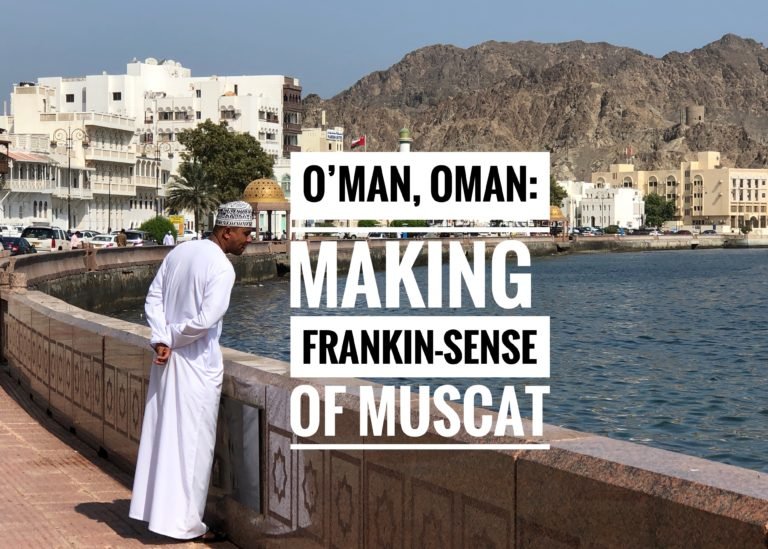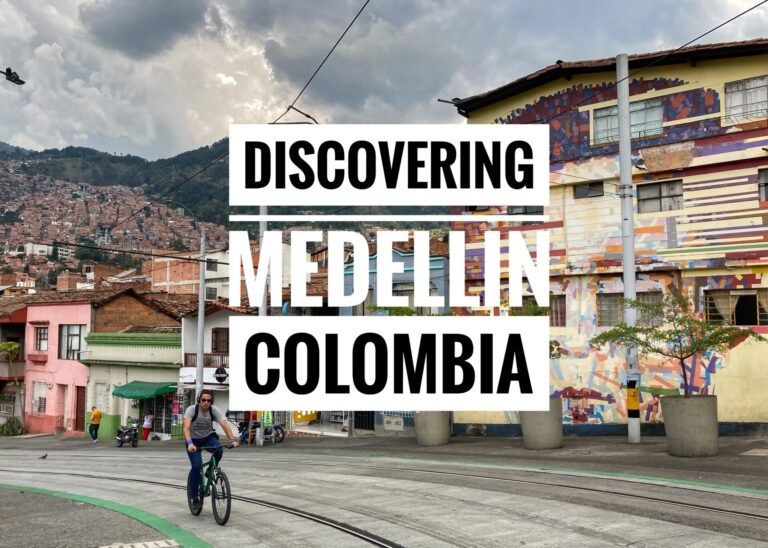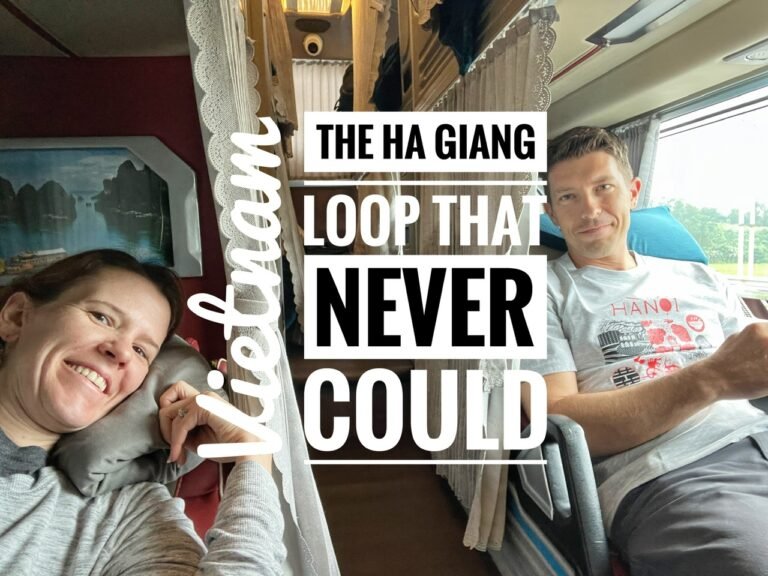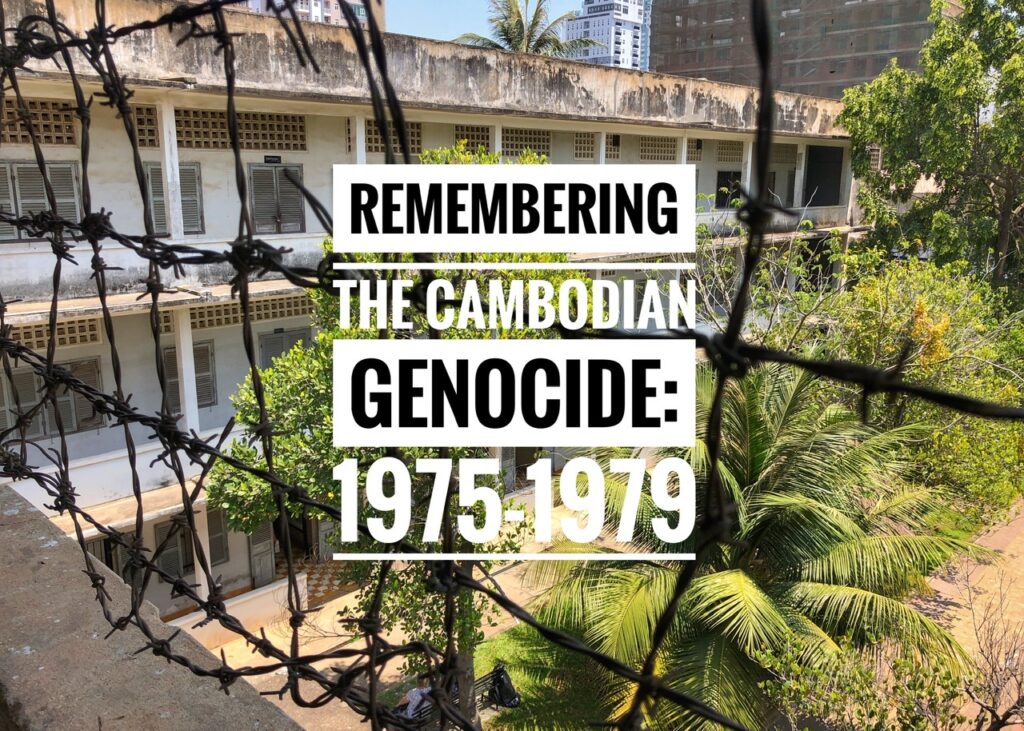
Before COVID shut down all the tourist sights in Phnom Penh, we went to the Tuolsleng Genocide Museum, followed by the Killing Fields, one of only 343 known sites where thousands of Cambodians were executed by their own people during the 1975-1979 Genocide. Three million of Cambodia’s eight million died during this tragic regime. This is when the Khmer Rouge party, under Dictator Pol Pot, rose to power and essentially wanted to kill not just their enemies but everything, to start over with a new Cambodian “master race.” This social engineering scheme targeted “new” people: anyone who was westernizing, educated, or even seemed educated in any way. This included things like wearing glasses, speaking a foreign language or having soft hands (due to lack of field work.)
It certainly gave us a newfound respect and admiration of the Cambodian people who survived this time, as they continue to rebuild their country after such recent atrocities. It also puts it in perspective the insanity of what’s going on with COVID. Although there’s a lot of uncertainty for all of us, we’re feeling grateful for a roof over our heads, food in our bellies, clean air and water, a comfortable bed, and the simplicity of being free (even though we sometimes feel “trapped.”) Things can always be worse and it’s important to remember this at times like these.
The Khmer Rouge took over the streets of Phnom Penh in April 1975. Most of the city dwellers were forced to abandon their homes and walk for days upon days into rural regions of the countryside for “re-education” where they were fed daily propaganda, ultimately leading to forced labor, starvation, disease and executions for most. Children as young as six years old were even trained to be Khmer Rouge soldiers.

Pictured is the Tuolsleng Genocide Museum in Phnom Penh. This was once a high school which turned into an utter nightmare when the Khmer Rouge took “suspicious” people (like teachers, monks, doctors and government workers) here for torture and interrogation. It has a $5 entrance fee and costs $3 additional for the audio tour, which is pretty much essential at a place like this.

From 1976 to 1979, an estimated 20,000 people were imprisoned at Tuol Sleng. Of these, there were only 12 known survivors. At any one time, the prison held between 1,000–1,500 prisoners. They were repeatedly tortured and coerced into naming family members and close associates, who were in turn arrested, tortured and killed. Later, the party leadership’s paranoia turned on its own ranks and purges throughout the country saw thousands of party activists and their families brought to Tuol Sleng and murdered. (Wiki) Pictured is “Building A” where “VIPs” got their own rooms in which to be tortured.

The rooms had a frighteningly eerie presence, still holding the solitary steel-framed bed frames from which the victims were bound. Blood stains and pictures of the beaten victims marked the walls. The torture system was designed to make prisoners confess to whatever crimes they were charged with by their captors. Prisoners were frequently beaten and tortured with electric shocks, searing hot metal instruments and hanging. Some prisoners were cut with knives or suffocated with plastic bags. Outright killing them was discouraged, however, because the Khmer Rouge needed their confessions.

The rules of the S-21 Compound.

It was hard to imagine these hallways ever held the laughs and chatter of teenagers. Ironically most of the guards at the prison were also teenagers.

When the prisoners arrived to the prison, they were photographed and meticulously interviewed for full autobiographies from their birth to the time of their arrest. They were then stripped of their clothing and possessions and taken to their cells.

The victims who died were also meticulously photo-documented.

Most classrooms were converted into individual cells where prisoners were shackled to the floors. The day in the prison began at 4:30 a.m. when prisoners were ordered to strip for inspection. The guards checked to see if the shackles were loose or if the prisoners had hidden objects they could use to commit suicide. Over the years, several prisoners managed to kill themselves, so the guards were very careful in checking the shackles and cells. The prisoners received four small spoonfuls of rice porridge and watery soup of leaves twice a day. Drinking water without asking the guards for permission resulted in serious beatings (Wikipedia.) If you so much as ate a cricket off the floor and a guard saw you, you would be beaten.

One of the many former classrooms turned into torture cells.

The barbed wire that surrounded the prison.
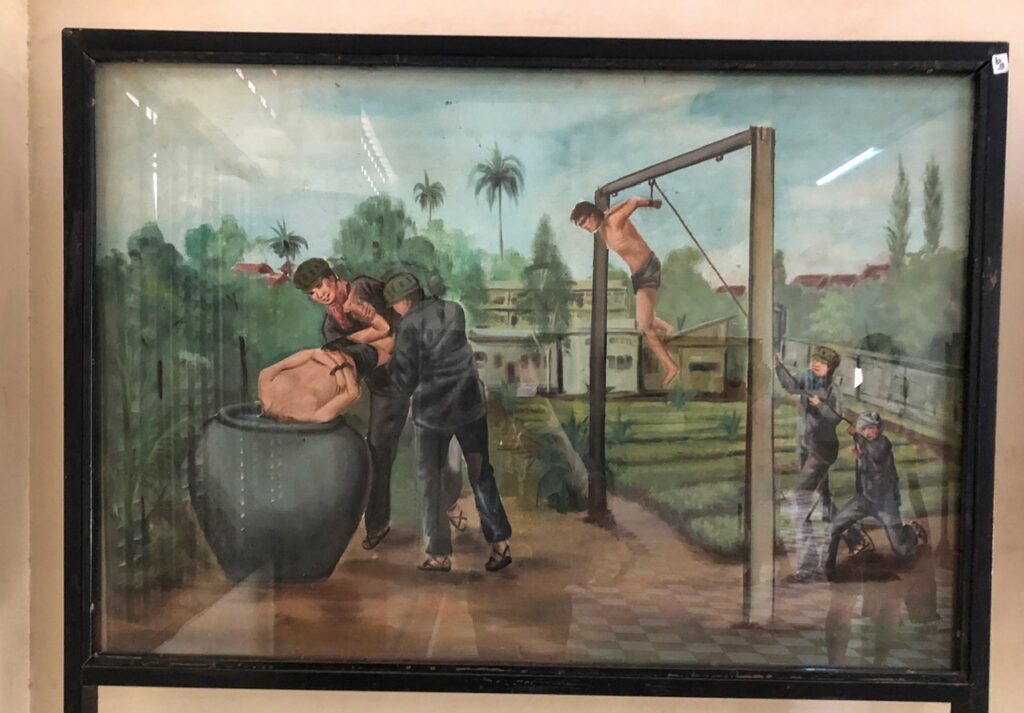
As aforementioned, there were many methods of torture. Other methods included pulling out fingernails while pouring alcohol on the wounds and holding prisoners’ heads under water, which is illustrated in this picture.
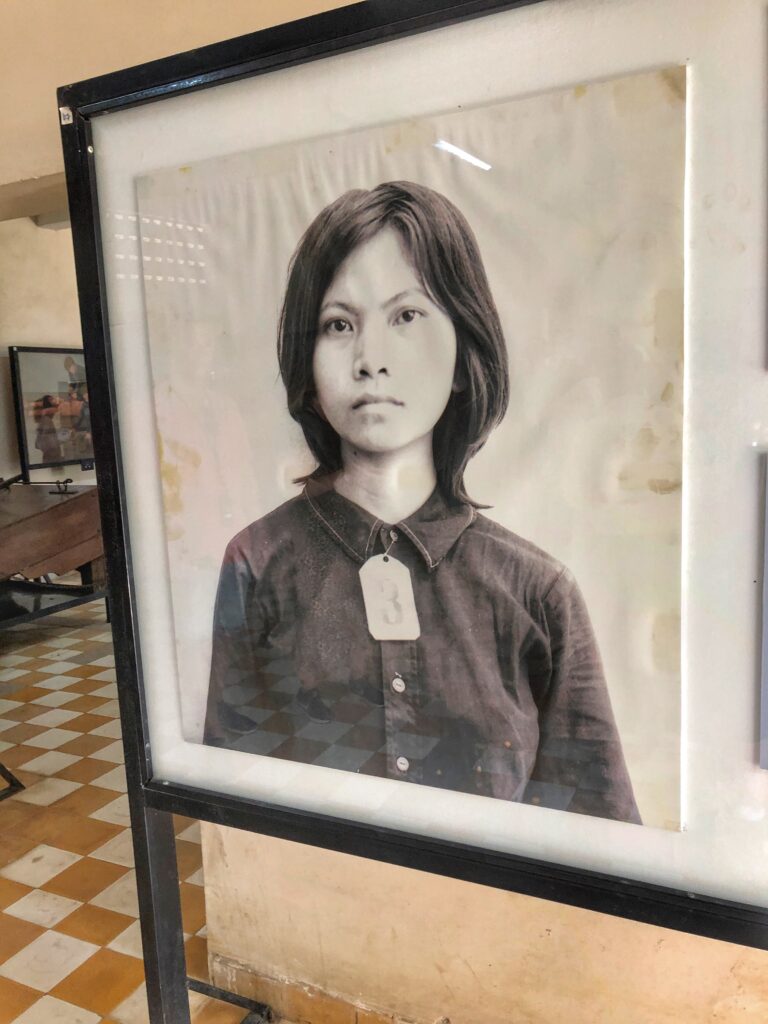
Hout Bophana, is the most famous face of the Tuolsleng prison thanks to the tortured long distance love story between she and her distant cousin, who became a monk to avoid the draft. She was marked for persecution thanks to her sophisticated education and well on her way to dying of starvation when her beloved suddenly reappeared — not in monk’s robes, but in the black pajamas of the Khmer Rouge. Read the book Bophana: Love in the Time of Khmer Rouge.
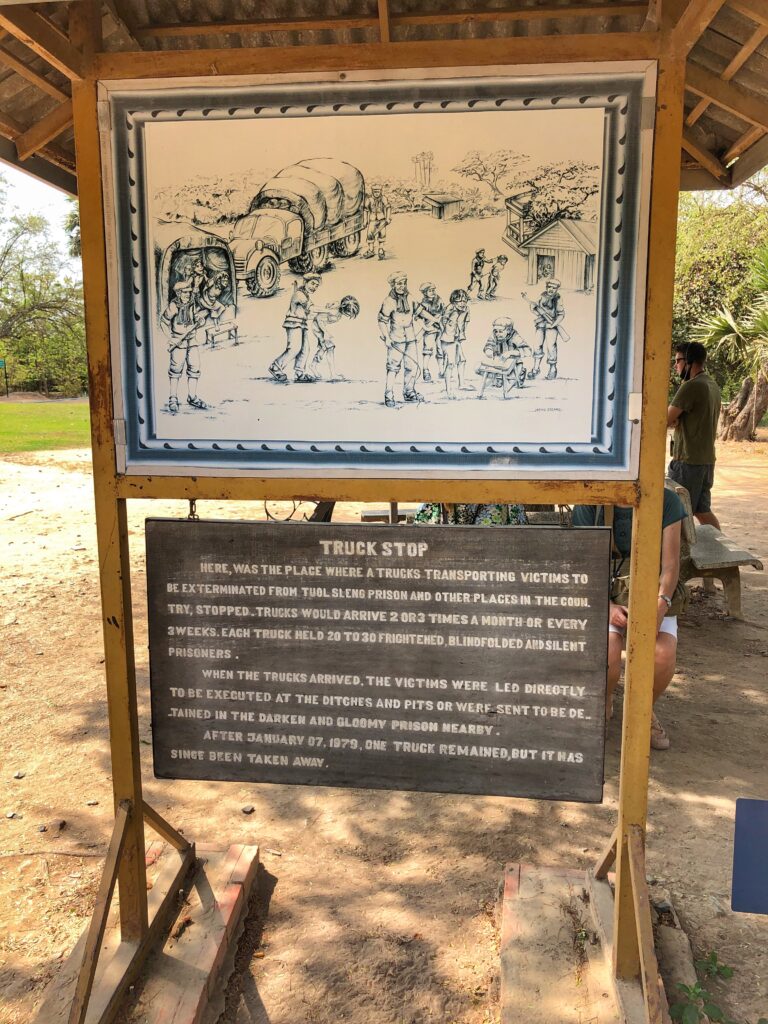
After a sobering visit to the genocide museum, we took a day off before going to the Choeung Ek Killing Fields. This Killing Field near Phnom Penh is the one of the few which memorializes the millions of victims killed at such places in Cambodia. Prisoners from Tuosleng, among other prisons, were blindfolded, silenced and taken here for execution by trucks. Zoom in for full summary.

Most prisoners were sent for execution immediately but others were held in this detention hall.

The chemical substances store room held chemicals which covered the smell of the dead bodies to keep nearby field workers from suspicion. The chemicals were also used to “finish off” those buried alive.

Today it is literally just a peaceful, picturesque field with trees. It’s unfathomable the atrocities committed here.

There were multiple mass graves where the bodies fell to their deaths. They would often chain all the prisoners together, and use garden tools and machetes to brutally kill them and watch them fall like dominoes into the pits. If they were still living, they would then be buried alive.

The killing tools storage room. They did not use any guns here. (Bullets were expensive.)

A tranquil lake with lotus flowers in the back of the fields. It was a serene place to listen to audio stories and reflect.

Piles of victim’s clothing items.

Children were taken to this tree for beatings.

Teeth found throughout the site.

The magic tree. As you can read in the description, it wasn’t exactly magical.

In the middle of the fields is a giant memorial stupa to remember the victims, which was erected in 1988.

Inside are 8000 skulls arranged by gender, age and how they were likely killed.
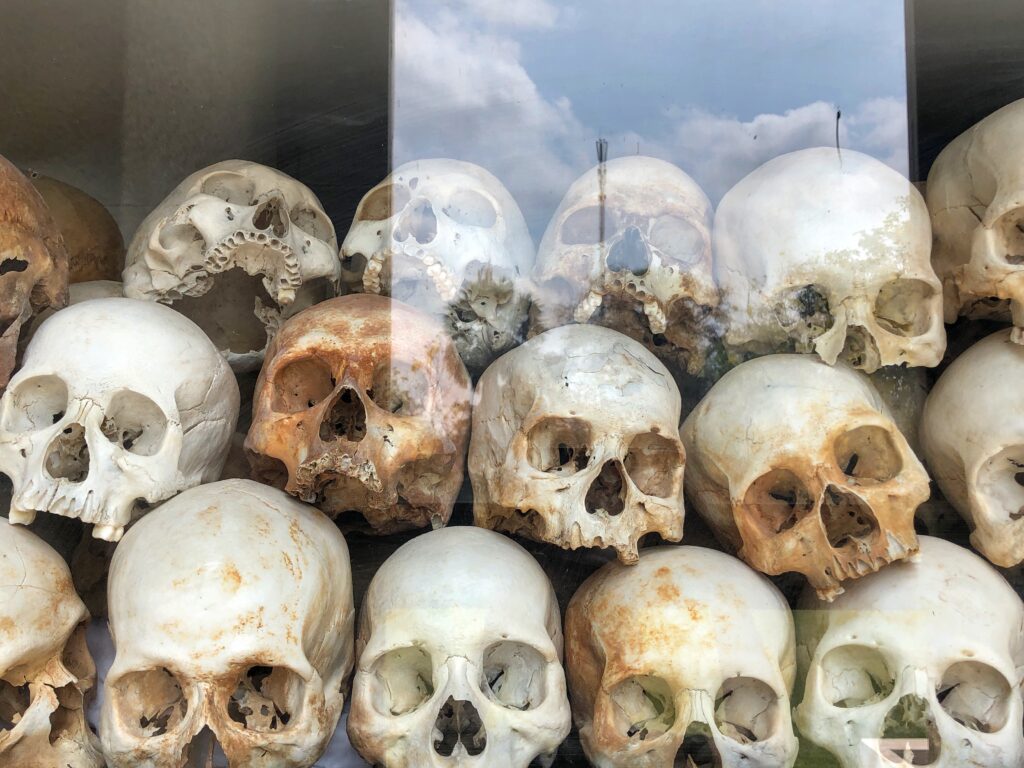
Unfortunately this is one of the many genocides we, at least as Americans, are not educated on in school. We strongly recommend you learning more. “At First they Killed my Father” is a fantastic movie available on Netflix directed by Angelina Jolie. There is also a book by the same name. Mandy also recently read “Beautiful Hero,” which is the story of a family of 9 who astoundingly managed to survive the Khmer Rouge. May all of these survivors and victims never be forgotten.

